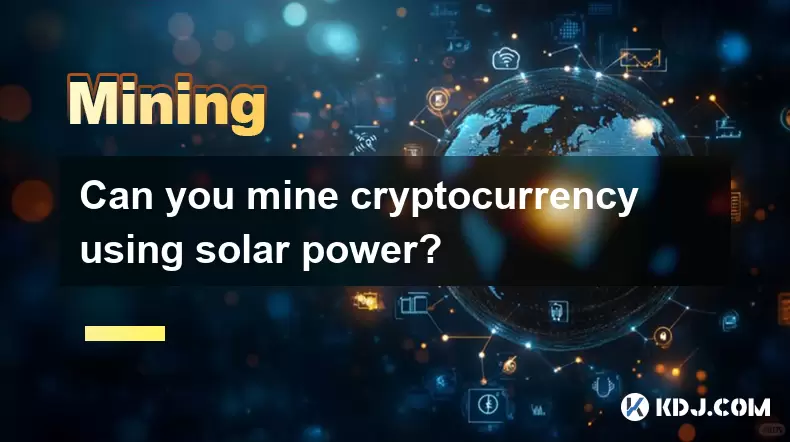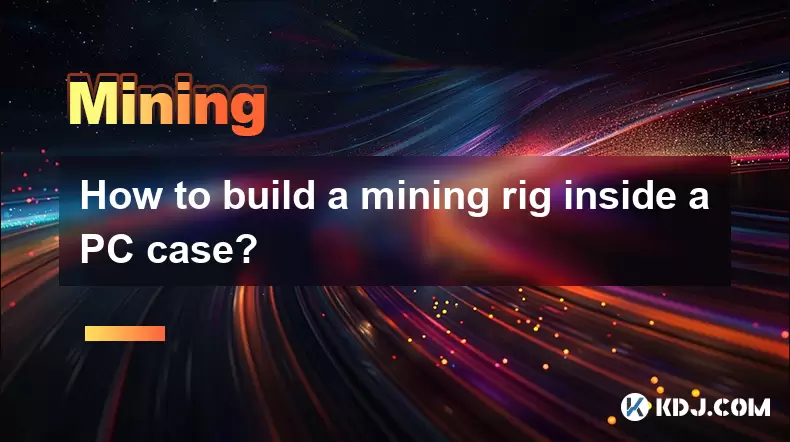-
 Bitcoin
Bitcoin $116400
0.87% -
 Ethereum
Ethereum $3819
3.86% -
 XRP
XRP $3.048
1.62% -
 Tether USDt
Tether USDt $1.000
0.03% -
 BNB
BNB $777.2
0.60% -
 Solana
Solana $169.3
0.46% -
 USDC
USDC $0.0000
0.02% -
 TRON
TRON $0.3414
2.06% -
 Dogecoin
Dogecoin $0.2126
3.33% -
 Cardano
Cardano $0.7527
1.21% -
 Hyperliquid
Hyperliquid $38.86
1.02% -
 Sui
Sui $3.683
5.27% -
 Stellar
Stellar $0.4048
1.45% -
 Chainlink
Chainlink $17.91
6.62% -
 Bitcoin Cash
Bitcoin Cash $576.9
1.29% -
 Hedera
Hedera $0.2487
1.03% -
 Ethena USDe
Ethena USDe $1.001
-0.01% -
 Avalanche
Avalanche $22.46
1.07% -
 Litecoin
Litecoin $120.8
1.69% -
 UNUS SED LEO
UNUS SED LEO $8.963
-0.30% -
 Toncoin
Toncoin $3.301
2.33% -
 Shiba Inu
Shiba Inu $0.00001250
1.13% -
 Uniswap
Uniswap $10.06
3.45% -
 Polkadot
Polkadot $3.731
1.56% -
 Dai
Dai $1.000
0.01% -
 Bitget Token
Bitget Token $4.416
1.58% -
 Cronos
Cronos $0.1482
3.73% -
 Monero
Monero $250.0
-12.34% -
 Pepe
Pepe $0.00001075
2.16% -
 Aave
Aave $274.6
4.17%
How can the income from pledge mining grow through reinvestment?
Reinvesting cryptocurrency staking rewards accelerates returns via compounding, but diversification across platforms and understanding tax/market implications are crucial for maximizing profits and mitigating risk.
Mar 20, 2025 at 12:42 pm

Key Points:
- Reinvesting staking rewards accelerates compound interest, significantly boosting long-term returns.
- Diversification across multiple staking pools mitigates risk and potentially increases overall yield.
- Careful selection of staking platforms is crucial for security and maximizing returns.
- Understanding the implications of inflation and network dynamics on staking rewards is essential for strategic reinvestment.
- Tax implications of reinvesting staking rewards vary by jurisdiction and require careful consideration.
How Can the Income from Pledge Mining Grow Through Reinvestment?
Pledge mining, or staking, offers a passive income stream in the cryptocurrency world. However, simply withdrawing rewards doesn't maximize potential profits. Reinvesting these rewards, a process often referred to as compounding, is key to exponential growth. This involves automatically adding your earned staking rewards back into your staked balance, generating even more rewards on a larger principal amount over time. The more frequently you reinvest, the faster your earnings accumulate.
The power of compounding lies in earning interest not only on your initial investment but also on the accumulated interest itself. This creates a snowball effect, with your earnings growing exponentially over time. For example, if you stake 1 BTC and earn 5% annually, reinvesting that 0.05 BTC will increase your staked amount, leading to higher rewards the following year.
Diversification plays a vital role in maximizing your returns while mitigating risks. Instead of staking all your assets in a single cryptocurrency or platform, consider spreading your investments across multiple projects. This strategy helps to reduce the impact of any single project's performance on your overall portfolio. Each cryptocurrency has its own unique characteristics and reward structures.
Choosing the right staking platform is crucial for security and maximizing returns. Prioritize reputable platforms with a proven track record of security and transparency. Research the platform's reputation, its security measures, and its user reviews before entrusting your assets. Look for platforms with competitive staking rewards and low fees. Avoid platforms with questionable security practices or a history of issues.
Understanding the underlying economics of the cryptocurrency you're staking is essential for long-term success. Inflationary pressures can impact the value of your rewards over time. Network dynamics, such as changes in the number of validators or updates to the protocol, can also affect your staking returns. Stay informed about the projects you're invested in to make informed reinvestment decisions.
Tax implications are a critical factor to consider. The treatment of staking rewards for tax purposes varies significantly depending on your jurisdiction. Some countries may consider staking rewards as taxable income, while others may have different rules. It is crucial to consult with a tax professional to understand your specific tax obligations related to staking and reinvestment. Proper accounting of your staking rewards is crucial for accurate tax reporting.
Reinvesting rewards requires a strategic approach. You'll need to carefully balance risk tolerance, potential rewards, and the complexities of managing multiple staking positions. Tracking your progress is vital, allowing you to adjust your strategy based on market conditions and your individual goals. This ongoing monitoring ensures your reinvestment strategy remains aligned with your investment objectives.
Different strategies exist for reinvestment. Some individuals might choose to reinvest all rewards, maximizing the compounding effect. Others might opt for a partial reinvestment strategy, retaining some rewards while still benefiting from the growth potential of compounding. The optimal strategy depends on your individual risk tolerance and financial goals. A well-defined plan ensures that your reinvestment strategy remains consistent with your overall financial objectives.
The frequency of reinvestment also impacts overall growth. While daily or weekly reinvestment maximizes compounding, it might involve higher transaction fees. Consider the fees associated with each reinvestment to find the balance between maximizing returns and minimizing expenses. Regularly evaluate the cost-effectiveness of different reinvestment frequencies.
Security remains paramount when reinvesting staking rewards. Use strong passwords, enable two-factor authentication, and regularly update your security settings on all platforms. Be cautious of phishing scams and only interact with official websites and communication channels. Prioritize security practices to protect your investment.
Successfully growing income from pledge mining through reinvestment requires diligent planning, research, and careful execution. This involves not only choosing the right projects but also understanding the associated risks and tax implications. Staying informed about market trends and adjusting your strategy as needed are crucial aspects of a successful reinvestment plan.
Frequently Asked Questions:
Q: What are the risks associated with reinvesting staking rewards?
A: Risks include the volatility of cryptocurrency prices, potential security breaches on staking platforms, changes in network parameters affecting rewards, and unforeseen regulatory changes.
Q: How often should I reinvest my staking rewards?
A: The optimal frequency depends on the platform's fees and your personal preference. More frequent reinvestment accelerates compounding but may incur higher transaction fees.
Q: Are there tax implications for reinvesting staking rewards?
A: Yes, tax implications vary widely depending on your jurisdiction. Consult a tax professional for guidance specific to your situation.
Q: What is the best way to diversify my staking investments?
A: Diversify across different cryptocurrencies and staking platforms to mitigate risk and potentially increase overall yield.
Q: How can I find reputable staking platforms?
A: Research platforms thoroughly, check their security measures, read reviews, and consider their track record before investing.
Disclaimer:info@kdj.com
The information provided is not trading advice. kdj.com does not assume any responsibility for any investments made based on the information provided in this article. Cryptocurrencies are highly volatile and it is highly recommended that you invest with caution after thorough research!
If you believe that the content used on this website infringes your copyright, please contact us immediately (info@kdj.com) and we will delete it promptly.
- Pi Coin's dApp and AI Potential: Building a Decentralized Future
- 2025-08-08 02:30:12
- Bitcoin, Greenidge, and Liquidity: Navigating the Crypto Currents in NYC
- 2025-08-08 02:30:12
- Crypto Phishing Alert: $3 Million USDT Loss Highlights DeFi Risks
- 2025-08-08 01:10:12
- Crypto Presale Mania: Is Punisher Coin the High ROI King?
- 2025-08-08 01:10:12
- Online Betting, Platforms & Crypto Access: What's Hot in 2025
- 2025-08-08 00:50:12
- Layer Brett: The Meme Coin Primed for 100x Gains?
- 2025-08-08 01:50:12
Related knowledge

What is "proof-of-work" and how does it relate to mining?
Aug 07,2025 at 02:03pm
Understanding the Concept of Proof-of-WorkProof-of-work (PoW) is a consensus mechanism used in blockchain networks to validate transactions and secure...

What are the differences between mining on Windows vs. Linux?
Aug 06,2025 at 11:29pm
Overview of Cryptocurrency Mining PlatformsCryptocurrency mining involves using computational power to solve complex cryptographic puzzles and validat...

How to use an old computer for cryptocurrency mining?
Aug 07,2025 at 12:42pm
Understanding the Feasibility of Using an Old Computer for MiningUsing an old computer for cryptocurrency mining may seem outdated, but it is still te...

Can you mine cryptocurrency using solar power?
Aug 07,2025 at 12:00am
Understanding the Basics of Cryptocurrency MiningCryptocurrency mining involves validating transactions on a blockchain network by solving complex cry...

How to build a mining rig inside a PC case?
Aug 06,2025 at 11:01pm
Understanding the Basics of a Mining Rig in a PC CaseBuilding a mining rig inside a PC case involves transforming a standard computer chassis into a d...

What are the best cryptocurrencies to mine with an ASIC?
Aug 08,2025 at 01:22am
Understanding ASIC Mining and Its Role in CryptocurrencyASIC stands for Application-Specific Integrated Circuit, a specialized hardware designed to pe...

What is "proof-of-work" and how does it relate to mining?
Aug 07,2025 at 02:03pm
Understanding the Concept of Proof-of-WorkProof-of-work (PoW) is a consensus mechanism used in blockchain networks to validate transactions and secure...

What are the differences between mining on Windows vs. Linux?
Aug 06,2025 at 11:29pm
Overview of Cryptocurrency Mining PlatformsCryptocurrency mining involves using computational power to solve complex cryptographic puzzles and validat...

How to use an old computer for cryptocurrency mining?
Aug 07,2025 at 12:42pm
Understanding the Feasibility of Using an Old Computer for MiningUsing an old computer for cryptocurrency mining may seem outdated, but it is still te...

Can you mine cryptocurrency using solar power?
Aug 07,2025 at 12:00am
Understanding the Basics of Cryptocurrency MiningCryptocurrency mining involves validating transactions on a blockchain network by solving complex cry...

How to build a mining rig inside a PC case?
Aug 06,2025 at 11:01pm
Understanding the Basics of a Mining Rig in a PC CaseBuilding a mining rig inside a PC case involves transforming a standard computer chassis into a d...

What are the best cryptocurrencies to mine with an ASIC?
Aug 08,2025 at 01:22am
Understanding ASIC Mining and Its Role in CryptocurrencyASIC stands for Application-Specific Integrated Circuit, a specialized hardware designed to pe...
See all articles

























































































